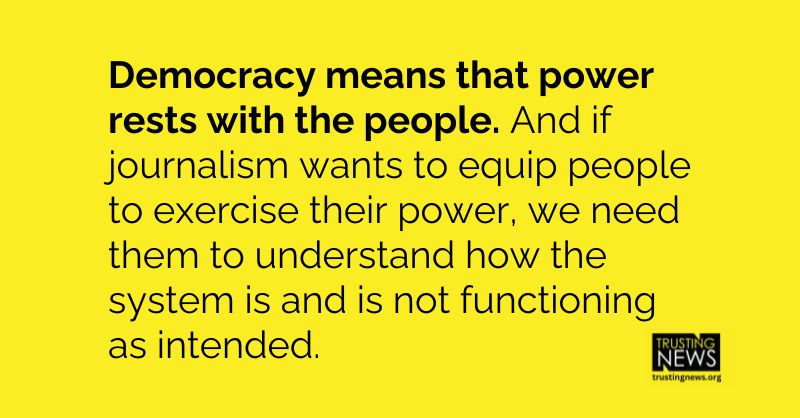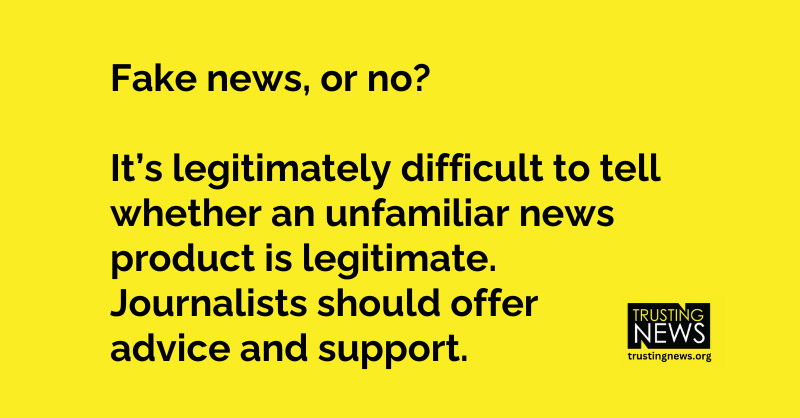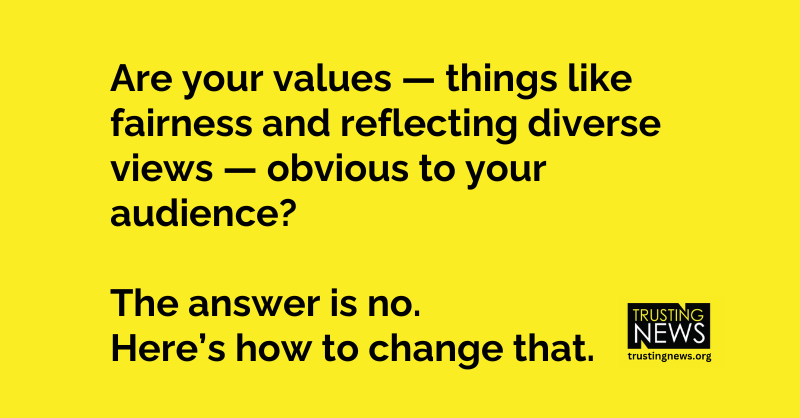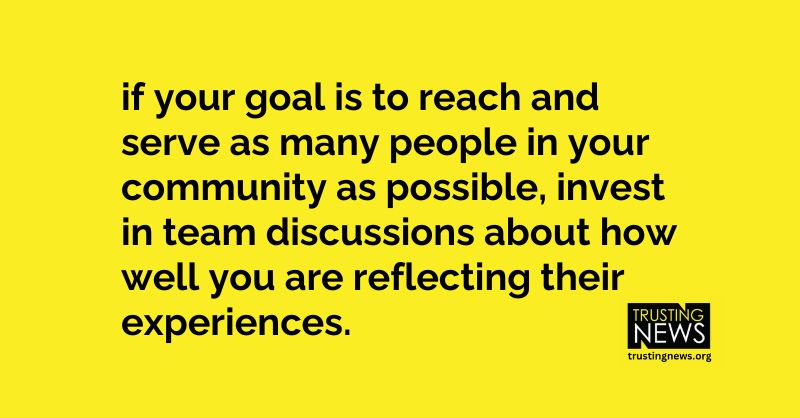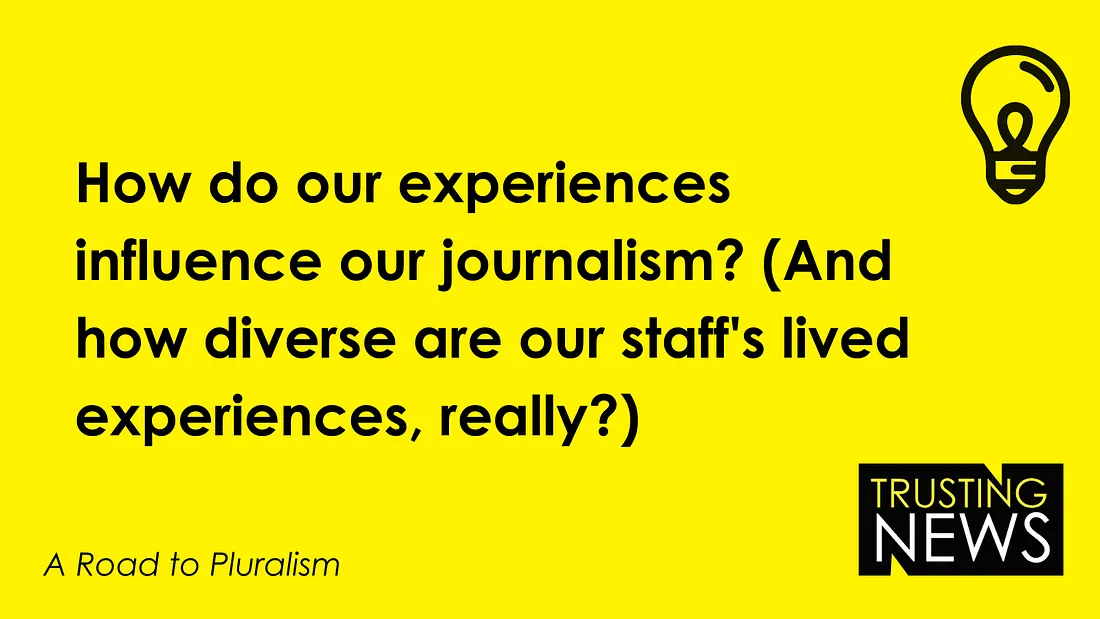
What do journalists tend to have in common, and what about us is the same or different from the communities we serve? To put a finer point on it: Who are journalists as human beings, and how do our own experiences inform the news we produce? These questions are central to the work we’re doing […]
Journalists, it’s time to talk about our biases
What do journalists tend to have in common, and what about us is the same or different from the communities we serve?
To put a finer point on it: Who are journalists as human beings, and how do our own experiences inform the news we produce?
These questions are central to the work we’re doing with our new initiative, A Road to Pluralism. In some ways, this is THE issue we’re addressing. I’m eager to dive in, and I hope you’ll join the conversation.
First, let’s establish what we’re talking about and see if we can agree on some basic ideas.
We all have blind spots
Who we are as people makes us more likely to notice certain things and not notice others — to ask certain questions and not consider others. Our lived experiences matter.
That’s why so many of us rely on frameworks like the “Fault Lines” training from the Maynard Institute. Their structure gives journalists a way to check the diversity and inclusivity of their coverage. Does it reflect experiences across differences of race, sexual orientation, gender, class, generation and geography? And does the staff?
We wrote last month about the concept of intellectual diversity, and how a goal of staff diversity is to have differences of perspective and experiences. In some cases (like gender, race and age) those differences are often visible. In others (like socioeconomic background, values and politics) they typically aren’t. But if we have a goal of reflecting the community we serve, those factors also matter. It matters that diversity exists on our staff, and it matters that our newsroom culture values our differences and empowers people (especially those with minority views) to challenge norms.
Journalists are different from average Americans
I’ve been reading Nikki Usher’s fantastic new book, News for the Rich, White, and Blue: How Place and Power Distort American Journalism. It points out some key, unavoidable truths about newsrooms. Journalists are of course whiter than their communities — a well-established problem that is not getting better nearly fast enough. (If you’re not sure if your newsroom has taken the News Leaders Association diversity survey, please ask.) The dominant culture in newsrooms is often set by white, upper class management, and it too often creates uncomfortable, unwelcoming spaces for people of color.
Journalists are also better educated than average, more middle to upper class (by actual salary or by mindset) and less likely to live in low-income areas. What we see in our own lives informs who we talk to, what we think is important, what we think is normal, what we ask questions about and, ultimately, what our coverage includes.
Here’s a general societal factor journalists are not immune from: We are increasingly surrounded by people we have a lot in common with. Usher writes about this “social homophily” and why it’s problematic for local journalists especially. We know our colleagues probably share a lot of our assumptions and values. Outside of work, are we hanging out with people who see the world differently?
Our experiences of course inform the way we describe the world. I’ve often revisited the writing of Heather Bryant, deputy director of product for News Catalyst and the interim executive director of Tiny News Collective. A 2017 post about journalism’s class problem really got people talking. She wrote: “Our industry needs to think hard about the worlds we’re living in, the kinds we’re building with each hire we make and ones that we want to reach with our reporting.”
In a follow-up post, she wrote about how journalists’ elitism is damaging our credibility.
“And when we look at what is published, what do we see?
“Headlines that talk about the effects of policies on “the poor.” As someone who grew up intensely poor, that is not what we called ourselves. And most don’t. Who is that headline for?”
Our own homogenous experiences cause us to write from a perspective of sameness, with an air of cultural anthropology to our descriptions of “other” people.
Usher writes in her book that 22% of newsroom employees live in one of three cities (New York, DC or Los Angeles), compared to 13% of the overall workforce. National journalists tend to live in blue bubbles. And if they tend to interact mostly with people like them, is it any surprise that so few conservatives report having at least a “fair amount” of trust in the news?
Since we launched our “A Road to Pluralism” initiative and released research on what conservatives think of local news, our team has gotten a lot of validation from journalists that this work is needed. The ones who have pushed back against its motives or usefulness have come from one of those big, blue cities. And their responses have made me wonder if, in their personal lives, they actually interact with or value the input of anyone who leans right.
We’re in a business based on curiosity, and on understanding and shedding light on complexity. The notion of pluralism is consistent with the goal of journalism.
Journalists, if your only perceptions of conservatives are coming from your comment section, you should acknowledge your blind spots and question how well you understand your country.
Newsroom cultures are often not welcoming to non-dominant views
P. Kim Bui and Emma Carew Grovum have put together a project called “Sincerely, Leaders of Color” that is a collection of advice for “creating a more supportive environment for journalists of color to do their best work.” Take a look through their posts to get a sense for where newsrooms are falling short of authentic inclusivity and support.
Then ask yourself: How comfortable do people in your newsroom feel raising questions that challenge a story’s framing? Or explaining why a word is insensitive? Or arguing for more nuanced sourcing? Or pushing for a story idea others don’t see the value in?
Are those challenges seen as welcome and important? Are people praised for them — for sticking their own neck out to make coverage better? Or are those brave employees seen as annoyances, as out of touch with “the way we do things” or as too biased to cover the news fairly?
We’ve heard from interview partners during our recent research that newsrooms can be hostile to minority political views as well. More than one referred to the idea of “closet” or “secret” conservatives in the newsroom — people who privately expressed gratitude for outreach to right-leaning community members but who don’t talk openly about their own beliefs in the newsroom.
Sometimes the opposite was true, and uniformity was assumed. Some of our partner journalists said they were confident the newsroom didn’t have anyone who had voted for President Trump. (Note: If your instinctive response to that is “good, Trump voters aren’t reasonable,” then you are lumping together and dismissing the views of more than 70 million Americans, and you might want to think about your basic level of curiosity about and respect for the people you cover.)
Often, when we talk about political diversity in newsrooms, attention goes to opinion coverage. That’s the place where transparency of views is often the norm, so it’s easy for our communities to hold us accountable for the balance of views across the spectrum.
But we let ourselves off the hook if we think balance in opinion coverage is the challenge here. Our news coverage is the main topic on the table.
So, where do we go from here?
How can we normalize conversations about this in newsrooms? What would that even look like? More than one journalist has said to us, “What, do you expect us to ask about political affiliation in job interviews?” The answer is no, we do not.
But what if we ask other questions that get at worldview? We ask about concrete or visible factors like race/ethnicity and languages spoken. But aren’t there elements of being raised in a Spanish-speaking household that could improve a newsroom’s coverage besides actually speaking Spanish?
What are ways we could learn about where someone has lived — both geography and community size? How about their family background and values?
For example, would it have been interesting to potential editors when I was in newsrooms to know that I’ve lived in eight states but spent my childhood split between the San Francisco area and Tulsa, Okla.? That I learned social justice values at fantastic magnet schools in the neighborhoods near where the Tulsa race massacre had occurred? That I’ve lived almost exclusively in suburban settings? That both my grandfathers and both my parents worked in choral conducting and church music, which steeped my upbringing in both religion and the arts? That my family never had much extra money but were in social circles that tended more toward middle to upper class and well educated?
There’s no doubt that all of that would color how I would cover my community now — arguably more than how I vote (which is pretty reliably Democratic, for what it’s worth). Those factors would say a lot about my assumptions, my natural sympathies and the knowledge and experiences I’ve amassed. And if I listed out examples of diversity of thought in my current household, it would get even more interesting. (My husband and I have raised our teenagers to think for themselves, and man, does that ever make family conversations spirited.)
Speaking of parenting, one of our newsroom partners mentioned that she’s the only mother in her (small) newsroom. That of course factors into the questions she asks about her community, right?
What if a job candidate were a veteran, or had a family with a law enforcement background? If someone’s family ran a small business, or included a lot of teachers, or had immigrated recently to the US, or worked in trucking, or was involved in environmental activism, or included people who were incarcerated — all of these factors might or might not contribute significantly to how the person sees the world now and how they would approach their journalism. But could our interview processes more thoughtfully include the opportunity for them to come up?
The questions on my mind about this are:
- What could it look like for journalists to take an honest look at our social homophily, identify blind spots and consider how they affect our coverage?
- How can newsrooms make sure people with non-dominant views are empowered to speak candidly and influence coverage?
- What could it look like for our hiring practices to contribute to our newsroom’s intellectual diversity — both in terms of access to the process and in terms of surfacing questions of culture and identity?
Let me know what you think. And consider joining our public brainstorming session around this topic at 2 pm ET on Thursday, Sept. 16.
UPDATE: Highlights from our event on bias in newsrooms
During the event, we invited you all to fill out these collaborative Google Slides. Feel free to sift through, and if you have any additions or thoughts, email our team at info@trustingnews.org.
When we asked which voices weren’t being heard in your newsroom, there were lots of thoughtful responses — veterans, conservative millennials, Indigenous people, new Americans, parents, folks with a working-class background — to list a few. (You can see more responses in the slide deck, along with ideas around questions a hiring editor might ask to understand a new hire’s life experiences.)
Some questions and ideas that came up we want to highlight:
- How do our assumptions and values as humans come through in our work? How do we accidentally or carelessly give the perception that we think there’s a right and wrong way to think about an issue we’re covering?
- Journalists often DO feel comfortable standing for specific values. How can we do that transparently while still making room in our coverage for different voices and opinions?
- How does the usually short turnaround processes for selecting and editing stories impact someone’s ability to speak up and bring in different perspectives and experiences? What kind of questions can editors ask to help challenge reporters’ assumptions?
- What would it look like to have shared, open conversations and be radically transparent in newsrooms about our biases? How can we be better at leaving space in newsrooms (both intellectually and physically) to allow people to share different perspectives and ideas?
- Which questions could we ask in the hiring process that would help us understand and diversify the different experiences and perspectives in our newsroom? (And which questions are we not allowed to ask but are still interesting to think about?)
Again, we’d love to hear any additional thoughts you have! If you’re game to continue the conversation and start experimenting, apply to join us in the Pluralism Network.
At Trusting News, we learn how people decide what news to trust and turn that knowledge into actionable strategies for journalists. We train and empower journalists to take responsibility for demonstrating credibility and actively earning trust through transparency and engagement. Subscribe to our Trust Tips newsletter. Follow us on Twitter and LinkedIn. Read more about our work at TrustingNews.org.
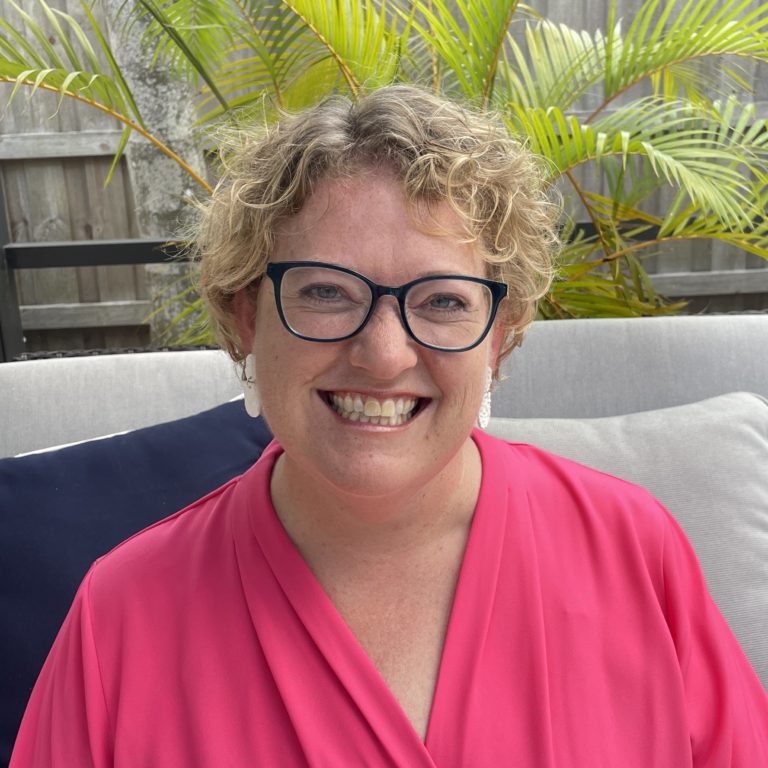
Executive Director Joy Mayer (she/her) founded Trusting News in 2016 after a 20-year career in newsrooms and teaching. She lives in Sarasota, Florida, and can be reached at joy@TrustingNews.org.
